Relevant Overviews
- Fediverse
- Content Strategy
- Online Strategy
- Online Community Management
- Social Media Strategy
- Content Creation & Marketing
- Online Architecture
- Digital Transformation
- Thinking tools
- Zettelkasten
- Learning from Andy Matuschak
- Personal Productivity
- Innovation Strategy
- Surveillance Capitalism, Social media and Polarisation (Overview)
- Communications Tactics
- Psychology
- Social Web
- Media
- Politics
- Communications Strategy
- Science&Technology
- Business
Overview: Thinking tools
Intro: why this overview?
I first came across the interrelated concepts overviewed here after launching myhub, and realised I'd been developing similar ideas as far back as 2013, when I first piloted this Hub on Tumblr (see Why you need a Personal Content Strategy). My ideas for MyHub evolved as a result - I now see:
- the user's public hub as the part of their Second Brain which they share with the outside world using the ActivityPub open web standard for decentralised social networks (aka Fediverse - see related Overview)
- the underlying MyHub content management system evolving into a Thinking Management System, with content productivity and creativity tools integrated within it.
As far as I know this hasn't yet been done: creators are currently supposed to do their thinking in Obsidian, Roam or some other "thinking tool" software, and then publish their content using Wordpress, and then share it via Twitter. Why not make your public website - and the writing on it - a seamless extension of your second brain? And why not network it with other second brains via the Fediverse?
Why not make your public website - and the writing on it - a seamless extension of your second brain?
To turn these ideas into reality, however, I need to do a deep dive into thinking tools. I'm using my current personal content strategy - ie:
- refocusing my Priority Sources (newsletter filters, Highlights Twitter List, etc.) on sources of high-quality content about thinking tools
- queueing the best content they publish on a daily basis
- reading and annotating it on a daily basis
- reviewing that content on a weekly/fortnightly basis, and updating this Overview as required
- developing my own ideas in the form of notes, newsletters and posts.
More: Simplifying Zettelkasten by working out loud
This Overview is therefore a crucial part of this process: it provides both a summary of what I have discovered in this space so far, and (below) a search result of the content I read when developing this Overview (stuff I Like), and the content I wrote and built as a result (stuff I Think and Do). In other words:
- I'm using my personal content strategy processes to explore directions for MyHub's evolution
- I'm using my current Hub to test how well its features support those processes today, and how they evolve
- the rest of this Overview is a continual work in progress, written primarily for myself. If you want to see what I've written, then jump straight to All the Stuff I Do or Think about Thinking Tools, Anytime.
Key concepts
(Last update: 31/10/2021): When I created this overview I identified 10 pre-existing tags to use as a baseline: inbox zero, spaced repetition, 2ndbrain, fedwiki (for federated wiki), mindfulness, mindhack, (information) overload, roamresearch, weekly review and zettelkasten. That pulled in 44 resources, each with at least one of those tags.
(Feature idea: AI & visualisation tools integrated into my backoffice to help better surface concept clusters and the explore links between them).
Some notes on the major concept bundles:
- Second Brain (2ndbrain): essentially a synonym for thinking tool (which I use, as I prefer verbs over nouns)
- Productivity, GTD, Mindfulness: while a lot of the resources tagged mindfulness paint it as a racket, I still want a thinking tool that replaces FOMO with the serene confidence that my thinking tool has (a) captured the content I need to read, the stuff I have already read & the ideas I've already had; and (b) will easily surface it when I need it. It must support personal Getting Things Done (GTD) processes rather than become a GTD tool: it'll have a reading queue, for example, and hopefully provide a stream of ToDos to external task management tools.
- Zettelkasten, Knowledge Management, Creativity, Ideation: the Zettelkasten personal knowledge management (PKM) technique will be a building blocks of the MyHub thinking tool, which is why I created an entire overview on it. My zettelkasten is currently distributed across several IT tools: this Hub (public bibliographic notes and other public content - i.e., the stuff I Like, Think and Do); Pocket (my reading Queue): Asana (ToDo mgt) and fleeting/permanent notes (Roam Research). While it works as a whole, it's hard to connect the dots between these different siloes, so I'll be exploring other tools as I develop this overview.
- (Personal) Content strategy: content strategy is itself an important tag on my Hub (188 resources and counting) as it's a major element of most of my professional consulting gigs. In this context, however, the focus is on personal content strategy: what sorts of content are important to you, where do you put that content, how do you manage it, which types do you share, and how? While there's a major overlap with personal knowledge management, you need a personal content strategy first, as it defines the needs.
- Annotation, Curation: If you annotate (make notes on) what you read as you read it, you're more likely to absorb the knowledge within it and apply that knowledge to your life. If you curate it (tag it) as well, you're more likely to find it again when you need it (assuming you have a half-decent knowledge management tool), alongside your own ideas and other notes (also tagged). Most people tag these notes in their thinking tool, which is private. By integrating thinking tools into MyHub, users will be able to keep some notes private and share others as part of their personal content strategy (next).
- Progressive summarisation: successively summarising knowledge to better improve understanding and memorisation. This and other Overviews provide a simple example: after summarising each resource as I annotate it into my Hub, I summarise the knowledge of multiple resources in an Overview.
- Fediverse: a "collection of interoperable social networks built on Open Web standards... [including] Twitter-lookalike Mastodon and YouTube-lookalike PeerTube", according to my dedicated Overview. It's here as well because linking Hubs together via Fediverse standards would allow users to expand their thinking tools to include the notes publicly shared by other Hubs, Mastodon & PeerTube accounts, etc. Moreover, those accounts would also be able to follow Hubs.
Key elements
Different tools have different elements, but here are some of the most important and/or common ones.
Flexible/difficult vs. inflexible/easy (aka 80/20 rule)
The 80/20 question (aka the Pareto principle) is central to productivity, and applies to many software tools - do you design it:
- to be used in only one way: this makes it really easy to get started, but difficult/impossible to customise to your needs
- or as a toolbox: each user can customise to its specific needs, but only after a lot of work?
The flexible/difficult approach is IMHO best illustrated by roamresearch: it's enormously powerful and flexible, but to take advantage of that you need to dive deep and geek out on templates and other plug-in code developed by 3rd parties. If you don't - like me - you end up with a lot of notes, but you're not harvesting the true power of your second brain. For me it fails the 80/20 rule: too much effort to get something useful out of it.
Bidirectional links
Extremely powerful feature. In essence, it means that linking from page A to page B adds a link from B back to A, but there's a lot more to it than that. I'm currently most familiar with Bidirectional links from roamresearch, where every page is designed like a Zettelkasten overview, and there's a page for every tag.
To be continued.
Blocks vs. pages
Does the tool use pages to manage knowledge? Or is a page simply a collection of blocks, each with its own unique identity, allowing you to find and manipulate it separately from the page in which it was first created?
Again, I understand this question principally through the optic of roamresearch, which takes the latter approach. To be continued.
Tools to explore
See: resources tagged #2ndbrain and #tool. I am currently migrating from RoamResearch to Obsdian, but you can't throw a stone without finding another one being launched.
---
Automated links to recent, relevant Highlighted Resources follow.
---
Relevant resources

Note-taking "software can’t automate your thinking. But I do think it can create the conditions for improved thinking: making new connections between ideas"helping reduce distraction"organizing your reading and making it more useful"Casey then intros a few apps he's started using since his last post, starting with "Ca…
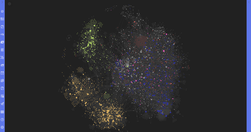
NvdH's complete overview of her usage of Obsidian. My first step in transitioning from Roam is to Hub this with my thoughts (PS she has a video):Setupmultiple Obsidian vaults, each version-controlled Git repository on GitHub.plus main Obsidian vault in a Dropbox for extra version control and backup"Just for overkill" Obsidian Sync a…
Chris Aldrich asks: "is anyone actively using Hypothes.is as an off-label zettelkasten just by itself?... [it has] most of the basic functionalities:imple note taking,Notes are editable and update-able,There’s a tag functionality for indexing notes,One can add links to other notes to cross link them if they liked,There’s a reasonably good sea…
Having fun using Andy Matuschak's wonderful site to explore his innovative ideas on note-taking, zettelkasten, writing, etc. This link opens a number of his interrelated notes, displayed horizontally using his innovative 'stacked notes' information architecture.Key ideas from this stack:the importance of 'task division' in…
Andy Matuschak's working notes "are mostly written for myself: they’re roughly my thinking environment... But I’m sharing them publicly as an experiment ... [see] Work with the garage door up... Write notes for yourself by default, disregarding audience)... there’s no index or navigational aids: you’ll need to follow a link to some start…
Overviews allow you to add value to a collection of Resources. They appear whenever relevant in the left column, and in the navigation phrase if you want them to.
I suspect this will be a canonical text for me moving forward with myhub.ai.Mike Caulfield in 2015, when my first hub was only about 2 years old, had also "been experimenting with another form of social media called federated wiki... instead of blogging and tweeting your experience you wiki’d it. And over time the wiki became a representation…
Here's a good question: "If we carefully closed the right feedback loops, could we construct a creative flywheel that generates finished works?... knowledge gardening. You collect and plant idea seeds, returning periodically to water and weed... As a kind of self-organizing system, it can’t happen without some kind of feedback loop... …
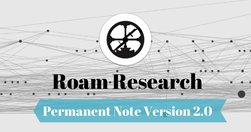
"Learning takes time and effort. You can't just import highlights to evernote and expect your brain to understand everything. You have to think to understand. And writing is the best facilitator of thinking." <- actually a quote from the original video, but worth keeping and carrying forward.
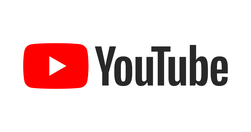
Watched the entirety over the last week of 2020. Highly recommended series for getting to grips with Roam, covering everything from the basic of how Roam works through to detailed HowTos on project & goal management, zettelkasten, etc. Having said that, I won't be migrating my tasks out of a dedicated task mgt tool, or pasting bibliograph…

In response to this tweet, a link from Sascha who "distinguishes [only] between content notes and ... notes on notes". But it appears a little more complex than that."A Zettelkasten is neither a neatly structured filing system ... nor a turmoil deep sea generating ideas out of the ununderstandable chaos. There are three layers in my…
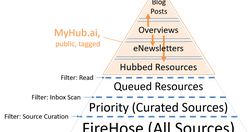
What did I learn about learning as I explored using Zettelkasten idea and knowledge management to write five newsletters about disinformation in the 2020 US elections?
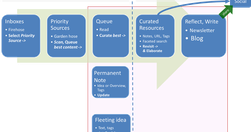
I’m exploring how MyHub.ai could become a unique hybrid of personal publishing and productivity tools by launching a newsletter powered by Zettelkasten knowledge and idea management, all hosted on my Hub.
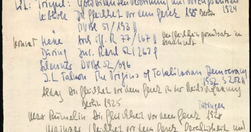
Books on note-taking... always too vague and boring, full of platitudes ... never an overarching system for turning notes into concrete results ... [but]How To Take Smart Notes ... is by far the most impactful and profound book I’ve ever read on the subject... most books are a few morsels of real insight wrapped in... fluff... I systematically unr…
Zettelkasten—German for “slip box.” Luhmann claimed that his Zettelkasten became a conversational partner, constantly challenging him and prodding him on to greater productivity... original system ... numbered index cards... contained a single and complete idea ... “atomicity”... as short as a simple sentence... had to fit into ... half-sheet of …
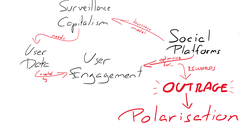
For the 6th episode of his Futurized podcast, Trond Undheim asked me why surveillance capitalism inevitably leads to polarised, undemocratic and dysfunctional societies, and what we must do about it...If we don’t change course, in the future we will be less will informed, more polarised, massively manipulated, living in more corrupt and less democ…
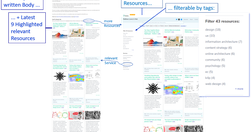
I needed to review everything I had ever Hubbed relevant to surveillance capitalism, polarisation, social media and society... As I cast around for something interesting to say, I realised a MyHub.ai Service Page could help organise and clarify my thoughts: I would use it to create a Zettelkasten Permanent Note...While not a blog post, it is defin…
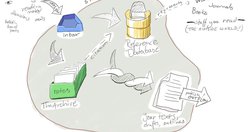
I am working hard on the “Building Blocks” chapter of the Zettelkasten book ... a birds-eye view of the overarching systems metaphor I’m using ... There’s a thing called “Zettelkasten”, and then there’s you using it. The former is the toolkit, the latter is your application of a method... I recognize... Inbox: the gateway into your knowledge syste…
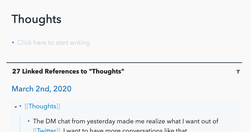
How to take smart notes explains the Zettelkasten system... explain how I apply rules 1-4 of Zettelkasten when using Roam
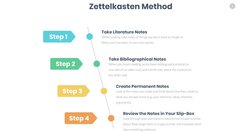
Zettelkasten allowed him to: build a huge web of knowledge, retrieve the right memory when needed, find meaningful connections among topics, and develop his ideas, arguments and discussions efficiently...The first step ... taking literature notes as you read something ... what you don't want to forget ... be brief ... in your own words ...sec…

Luhmann... published more than 70 books and over 400 scholarly articles... one of the most important sociologists of the twentieth century ... “I’m not thinking everything on my own. Much of it happens in my Zettelkasten”...adopt his method and ... learn better, think better, publish more, and be more creative... A Zettelkasten is ... a box of not…
Relevant Overviews
- Fediverse
- Content Strategy
- Online Strategy
- Online Community Management
- Social Media Strategy
- Content Creation & Marketing
- Online Architecture
- Digital Transformation
- Thinking tools
- Zettelkasten
- Learning from Andy Matuschak
- Personal Productivity
- Innovation Strategy
- Surveillance Capitalism, Social media and Polarisation (Overview)
- Communications Tactics
- Psychology
- Social Web
- Media
- Politics
- Communications Strategy
- Science&Technology
- Business